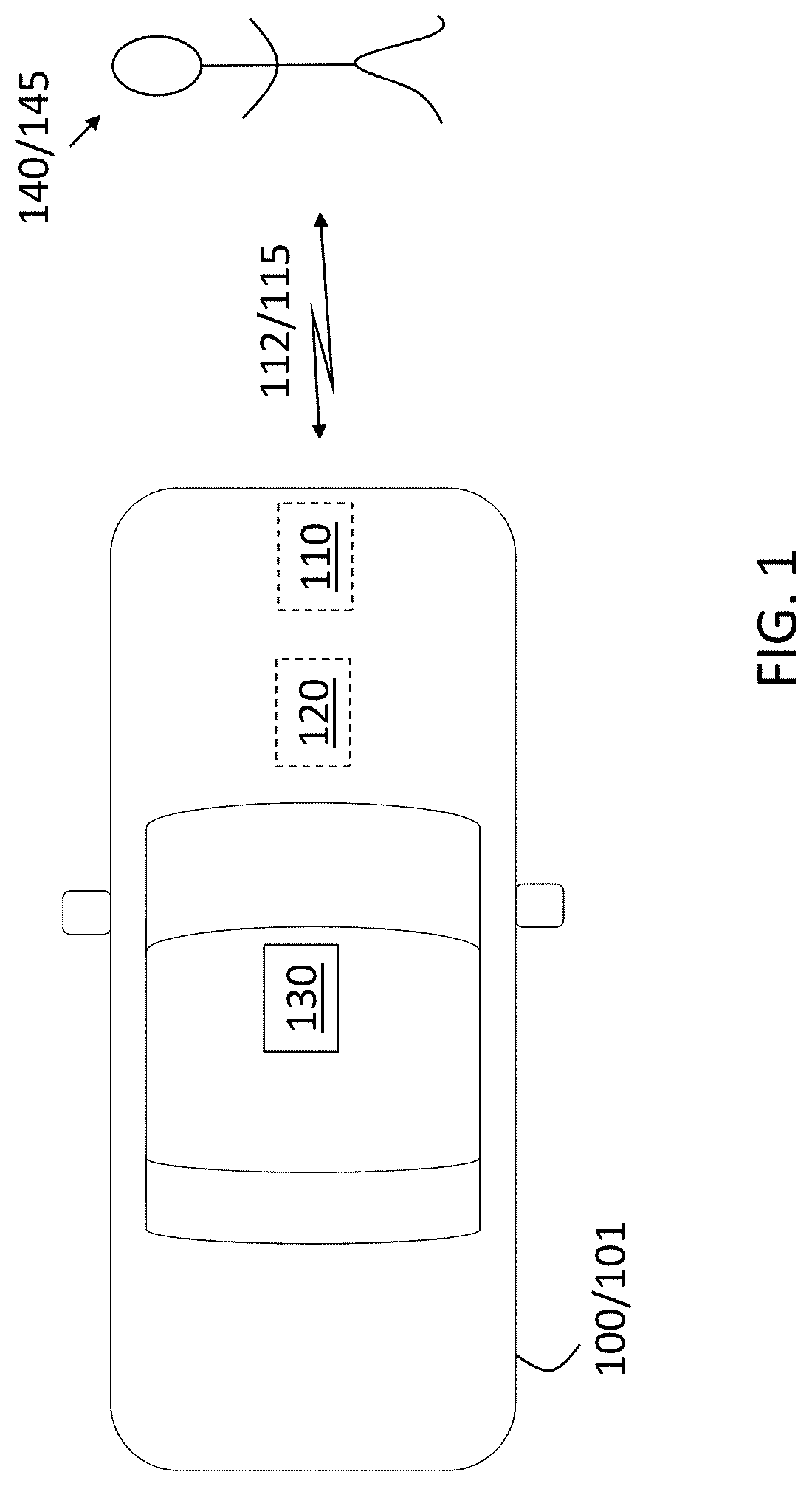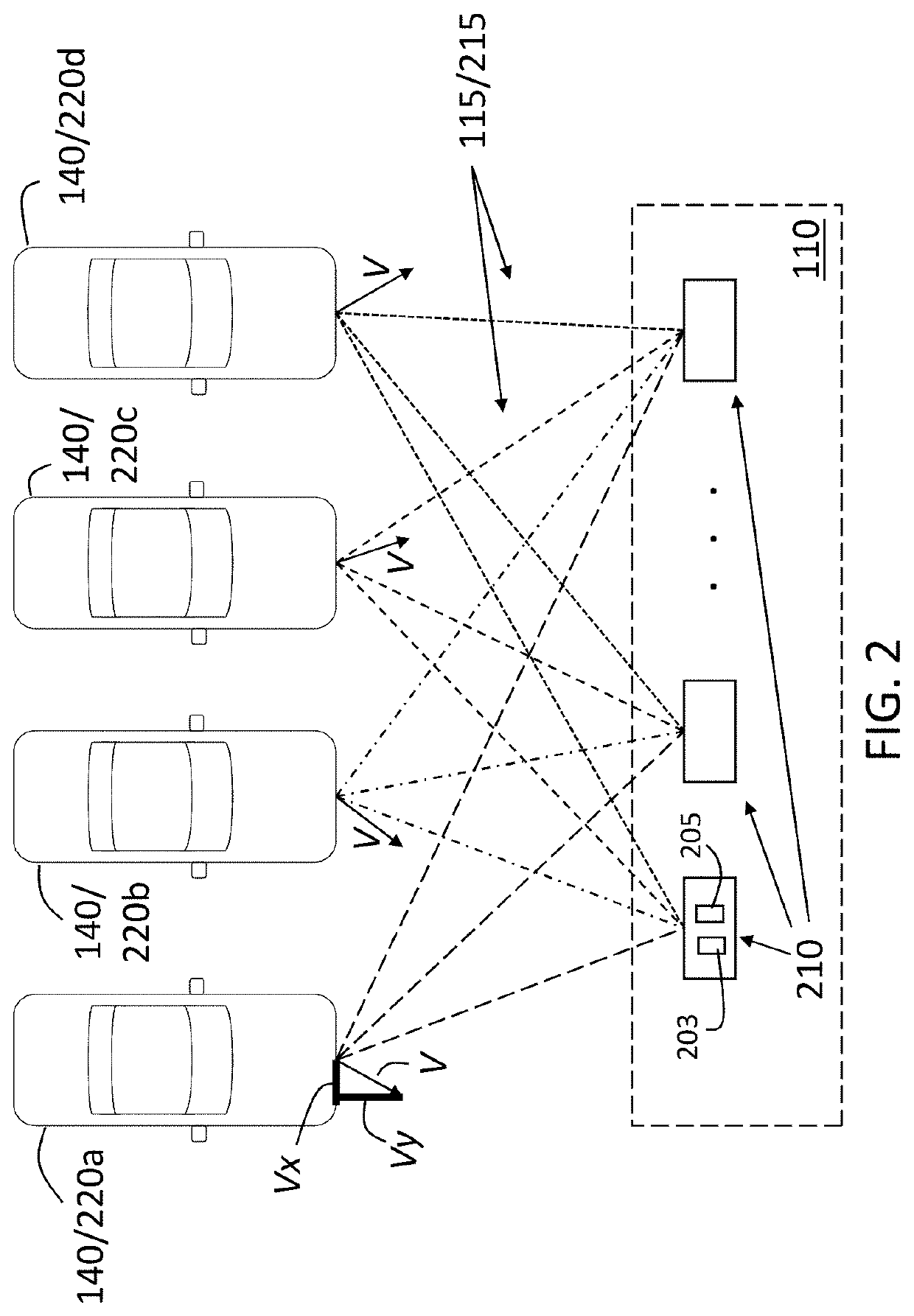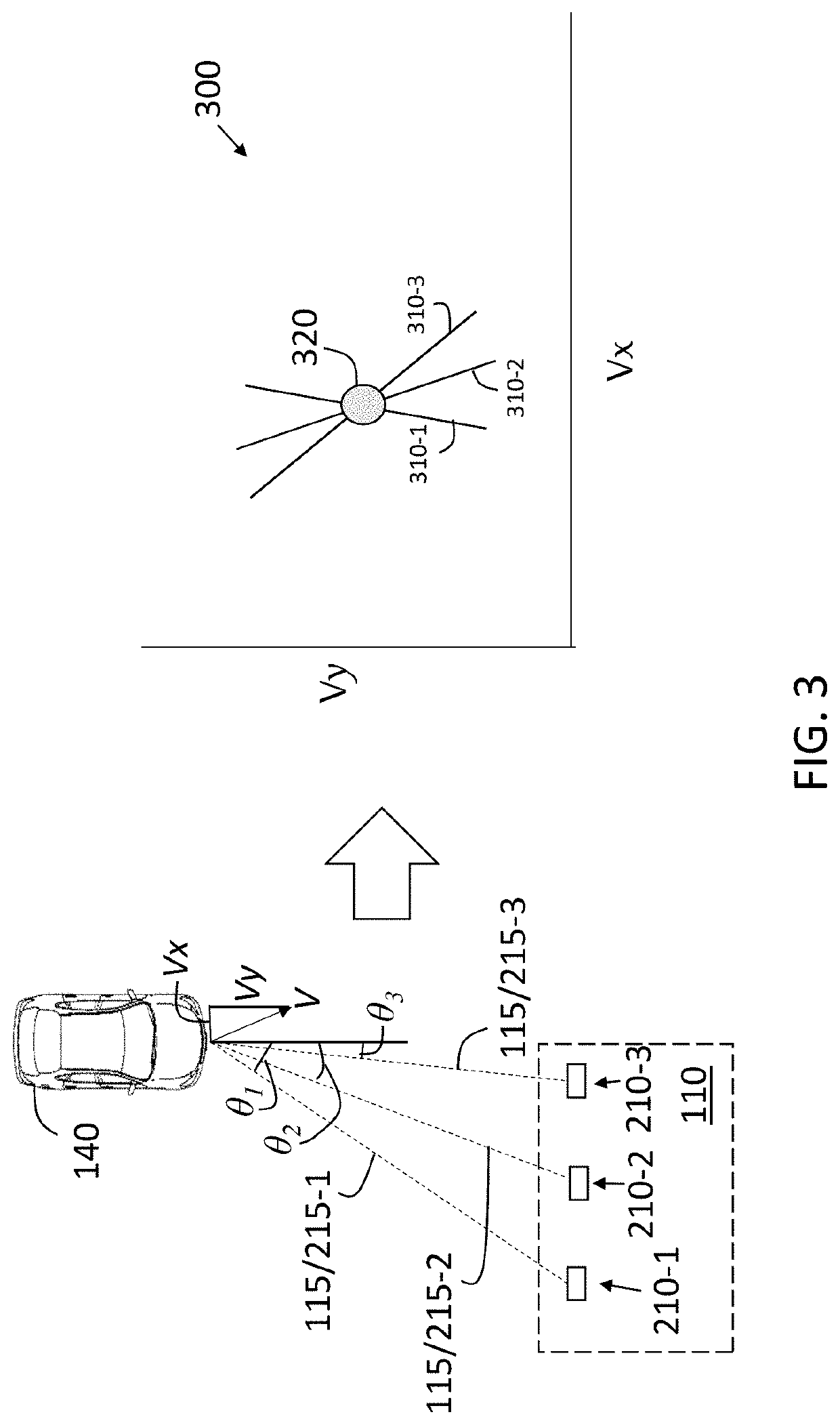Discriminate among and estimate velocities of multiple objects using multi-node radar system
a radar system and multi-node technology, applied in the direction of reradiation, measurement devices, instruments, etc., can solve the problems of difficult associating reflections at each of the nodes of the same object, and challenging the correct determination of the velocity of each of the objects
- Summary
- Abstract
- Description
- Claims
- Application Information
AI Technical Summary
Benefits of technology
Problems solved by technology
Method used
Image
Examples
Embodiment Construction
[0031]The following description is merely exemplary in nature and is not intended to limit the present disclosure, its application or uses. It should be understood that throughout the drawings, corresponding reference numerals indicate like or corresponding parts and features.
[0032]As previously noted, a multi-node radar system expands the field of view but presents challenges in a scenario involving multiple objects at similar ranges from the radar system. This is because the reflections from each of the objects appear at a different angle of arrival at each of the nodes. Further, there may be an overlap in the angle of arrival determined for different objects at the different nodes. As such, the information obtained at all of the nodes is difficult to parse in order to identify each of the multiple objects and estimate each of their velocities. Velocity refers to the relative velocity between the object and the radar system. Embodiments of the systems and methods detailed herein r...
PUM
 Login to View More
Login to View More Abstract
Description
Claims
Application Information
 Login to View More
Login to View More - R&D
- Intellectual Property
- Life Sciences
- Materials
- Tech Scout
- Unparalleled Data Quality
- Higher Quality Content
- 60% Fewer Hallucinations
Browse by: Latest US Patents, China's latest patents, Technical Efficacy Thesaurus, Application Domain, Technology Topic, Popular Technical Reports.
© 2025 PatSnap. All rights reserved.Legal|Privacy policy|Modern Slavery Act Transparency Statement|Sitemap|About US| Contact US: help@patsnap.com



